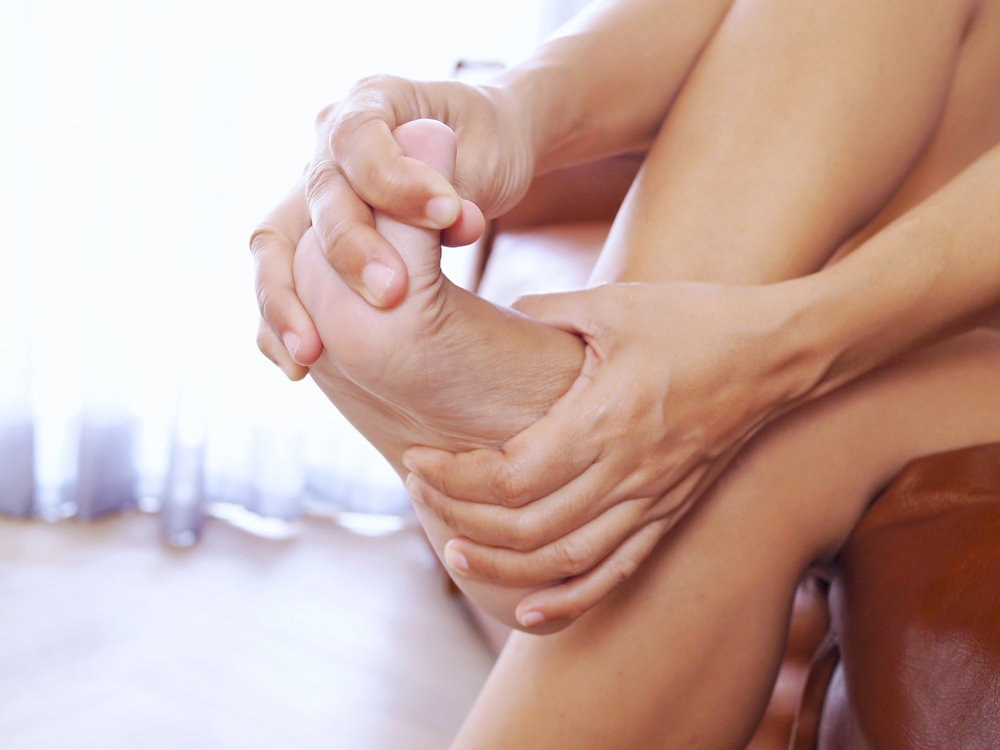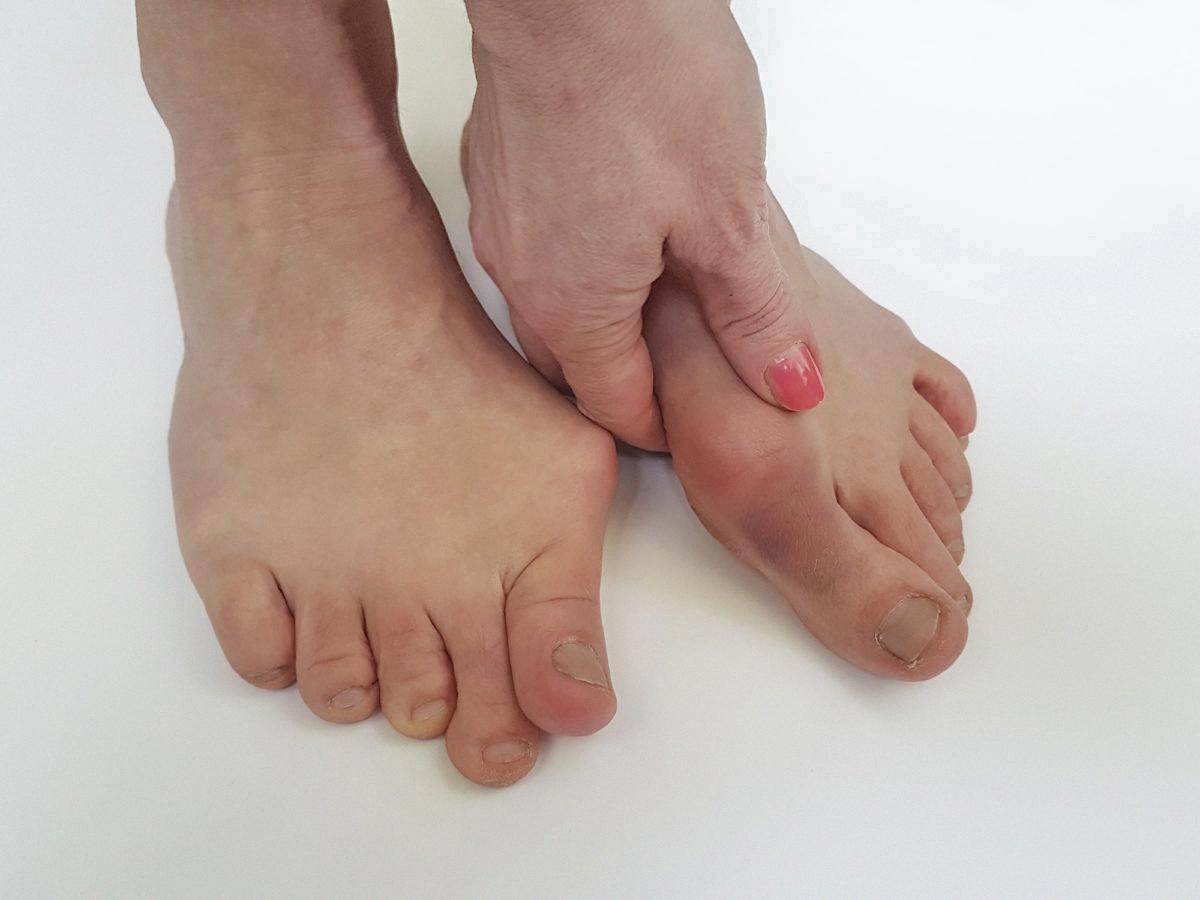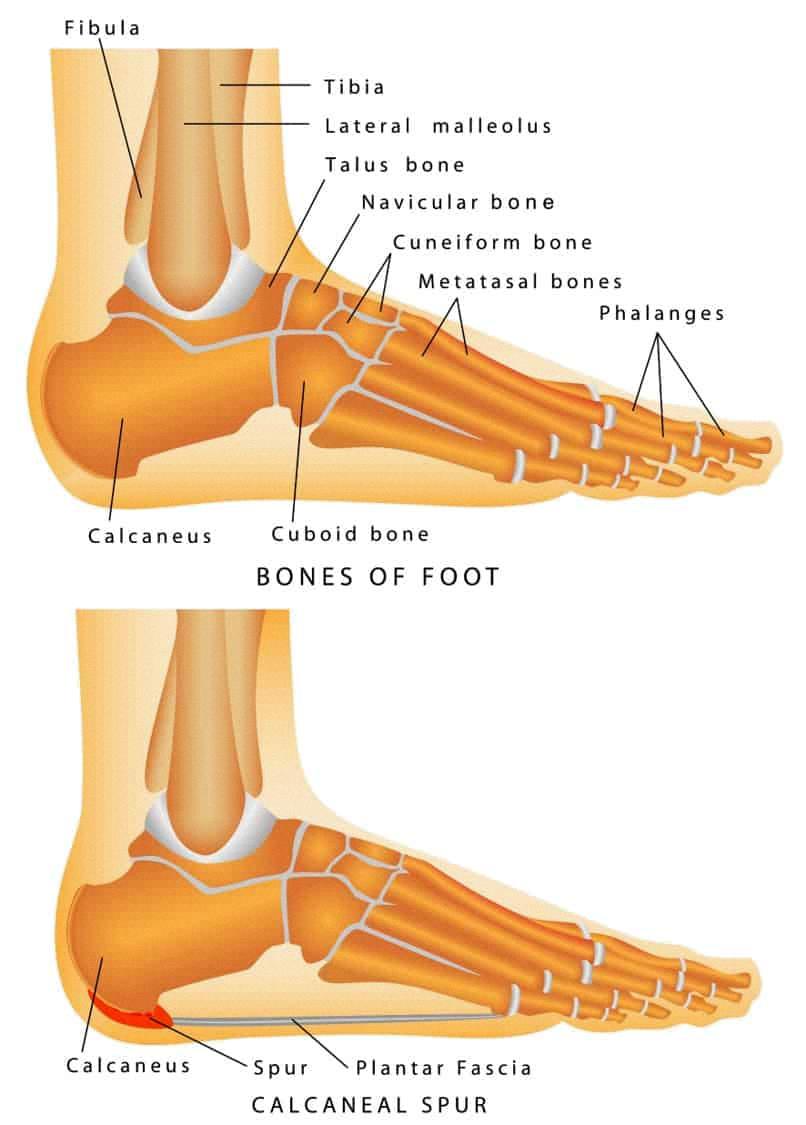When it comes to foot pain, it can be difficult to determine the cause. Two common causes of foot pain are bunions and bone spurs. Although these conditions may seem similar, there are some key differences between them that you should be aware of before seeking treatment.
Bunions are a deformity of the bones and soft-tissue imbalance caused by ill-fitting shoes or genetics. They are identified by an angular bony bump on the side of the foot at the base of the big toe. The big toe will point in the direction of your smallest toe, and sometimes hardened skin or a callus covers the bump. Bunions form slowly over time, uually over years.
On the other hand, bone spurs are extra growths of bone around a joint that often result from trauma to the joint or arthritis. Signs of bone spurs in feet include pain in the joint when you’re active (especially as you push off on your toes when you walk), swelling around the joint, a bump like a bunion or callus on top of your foot, stiffness in your big toe, and an inability to bend it up or down.
It’s important to note that bunions and bone spurs require different treatments, so if you experience any symptoms associated with either condition it’s important to see a doctor for diagnosis and treatment options. In some cases, orthotics can help relieve symptoms associated with both conditions; however, more serious cases may require surgery if they don’t respond to conservative treatments such as rest, ice therapy and changes in shoes or activities.
If you have any questions about bunions vs. bone spurs or think you may be experiencing one or both conditions, contact your doctor for further consultation and advice on how best to treat your condition for long-term relief from foot pain.
Are Bunions and Bone Spurs the Same?
No, a bunion and a bone spur are not the same. A bunion is a deformity of the bones and soft tissue imbalance at the base of the big toe, usualy caused by ill-fitting shoes or genetics. It is characterized by a bump or protrusion at the joint of the big toe. A bone spur, on the other hand, is an abnormal growth of bone that occurs due to trauma to a joint or arthritis. Bone spurs can form anywhere in the body, but are most commonly found in areas where there is frequent rubbing between two bones. They can also be found in areas where tendons and ligaments attach to bones.

Identifying a Bone Spur in the Big Toe
If you are experiencing pain and swelling around the big toe joint, as well as a bump on the top of your foot, these may be signs that you have a bone spur in your big toe. Additionally, if your great toe is stiff and you are unable to bend it up or down, this could also be a sign of a bone spur. If any of these symptoms persist or worsen, it is recommended that you visit your doctor for a diagnosis.
The Relationship Between Bunions and Bone Spurs
No, bunions and bone spurs are not the same thing. Bunions are bony bumps that form on the side of the big toe and can be caused by too much pressure on the joint of the big toe. Bone spurs are extra growths of bone that can form around a joint and are usually a result of cartilage wearing away or breaking down. While bunions may lead to pain and discomfort, they do not directly cause bone spurs.
Diagnosing Whether I Have a Bunion or Something Else
If you notice an angular, bony bump on the side of your foot at the base of your big toe, it is likely that you have a bunion. The big toe may also point in the direction of your smallest toe. Hardened skin or a callus may cover this bump. Bunions usually form slowly over time, so it is possible that you have had this bump for a while and just noticed it now. If you are still concerned that it could be something else, it is best to consult a doctor for diagnosis and treatment options.
Do All Bunions Require Surgery?
No, not all bunions eventually need surgery. If diagnosed early and the right steps are taken, bunions may be able to be managed with conservative treatments such as shoe modifications, ice or heat therapy, orthotics, padding or taping techniques, stretching exercises and anti-inflammatory medications. However, if these methods fail to provide results after a prolonged period of time or if the bunion becomes too severe or painful, then bunion surgery may be necessary in order to remove the bunion for good.

Source: northwestsurgerycenter.com
When Is Surgery Necessary for a Bunion?
It’s important to note that bunion removal surgery should only be considered as a last resort. Non-surgical treatments, like wearing wider shoes and using orthotics, are usually recommended first. If these treatments don’t provide relief, your healthcare provider may recommend bunion surgery. For most people, the best time to have bunion removal surgery is when the bunion has become painful or is limiting activity and mobility. Surgery can help to reduce pain and restore foot function. Recovery from bunion surgery typically takes six to twelve weeks.
Consequences of Leaving a Bone Spur Untreated
If left untreated, bone spurs can cause long-term damage to the nerves and surrounding tissues. The pressure on the nerves can lead to muscle weakness, loss of function, and chronic pain. Additionally, the bone spurs can irritate the surrounding tissues, leading to inflammation and friction that causes further discomfort. Without proper treatment, these issues can worsen over time and interfere with one’s ability to perform everyday activities.
Consequences of Not Treating a Bone Spur
If a bone spur is left untreated, it can cause a number of problems. It can cause pain and inflammation in the affected area, as well as decreased range of motion in the joint. It can also lead to further damage to the joint due to increased wear and tear. In some cases, it may even lead to fractures or other more serious orthopedic issues if left untreated over time.
Can Bone Spurs Disappear Without Treatment?
No, bone spurs do not go away on their own. While they may not cause any symptoms, they will remain in the affected area until they are surgically removed. In some cases, such as when the bone spur is compressing a nerve or the spinal cord, surgery may be necessary to relieve pain and other symptoms. However, there are ways to reduce the risk of bone spur growth. Staying active and engaging in regular exercise can help keep bones healthy and reduce inflammation which can lead to bone spurs. Additionally, maintaining a healthy diet that is high in calcium and Vitamin D can help strengthen bones and reduce the risk of developing bone spurs.

Source: preferredfootankle.com
Causes of Bone Spurs
Bone spurs are caused by the body’s attempt to repair damaged cartilage, caused by osteoarthritis, with new bone growth. Osteoarthritis is a degenerative joint disease that affects the cartilage and other connective tissues in the joints. Over time, this damage to the cartilage leads to increased friction and joint instability, which can cause pain, swelling, and difficulty moving the affected joint. In an effort to protect itself from further damage, the body will create extra bone growth aound the affected area in the form of bone spurs. This is a natural defense mechanism by which your body attempts to reduce further damage and repair existing damage.
The Severity of Bone Spurs
Bone spurs can range in seriousness from being a minor annoyance to a major cause of pain and discomfort. In most cases, they don’t cause any problems and are asymptomatic. However, if the bone spur rubs against other bones or presses on nerves, it can cause pain, stiffness, and other symptoms. Depending on the severity of the discomfort caused by the bone spur, treatment may range from simple lifestyle changes to surgery.
Appearance of Bone Spurs
Bone spurs are bony projections that form on the edges of bones. They look like hard lumps under the skin, and can make joints in the fingers or toes appear knobby. In the shoulder, bone spurs can rub against the rotator cuff, which controls shoulder movement. This can lead to pain and inflammation in the area, as well as a loss of range of motion. Bone spurs may also form on other areas such as the spine or feet, and can cause various symptoms depending on their location.
Identifying Early Stage Bunions
Early stage bunions typically present as a small bump on the outside of the base of your big toe. It may be swollen, red and tender to the touch, and you may notice increased rubbing and pressure around your big toe joint. The skin over the bunion may also be thicker than normal, with corns or calluses forming where the first and second toes rub against each other.
Possible Conditions That Can Be Mistaken For Bunions
Bunions are a bony bump that forms on the joint of the big toe. They can sometimes be mistaken for bursitis, which is an inflammation of the bursae (the fluid-filled sacs that cushion the bones, tendons, and muscles near your joint). Bursitis causes the joint to look swollen and red and can be painful. It usually develops at the base of the big toe, making it hard to tell apart from a bunion at first glance. Other conditions sometimes confused with bunions include gout, hammertoes, or arthritis.
Consequences of Not Removing a Bunion
If a bunion is left untreated, it can have serios long-term consequences. Over time, the pressure that is placed on the joint in the big toe due to the bunion can cause inflammation and pain. This inflammation can lead to cartilage deterioration and, eventually, arthritis. This can lead to chronic pain and limited mobility in the affected joint. Surgery may be able to address bunions, but it cannot reverse any damage that has already been done to the joint by the bunion. Therefore, if you have a bunion it is best to have it treated as soon as possible in order to avoid complications like arthritis or chronic pain.
Conclusion
In conclusion, bunions and bone spurs are two distinct conditions of the feet. Bunions are deformities of the bones and soft tissue caused by ill-fitting shoes or genetics, while bone spurs are an extra growth of bone aroud a joint often caused by missing or broken-down cartilage. Signs of a bunion include angular bony bumps on the side of the foot at the base of the big toe, while signs of bone spurs include pain in the joint when active, swelling around the joint, a bump on top of the foot, and stiffness in the great toe. It is important to note that these conditions should be treated differently and it is recommended to seek medical advice for proper diagnosis and treatment.
